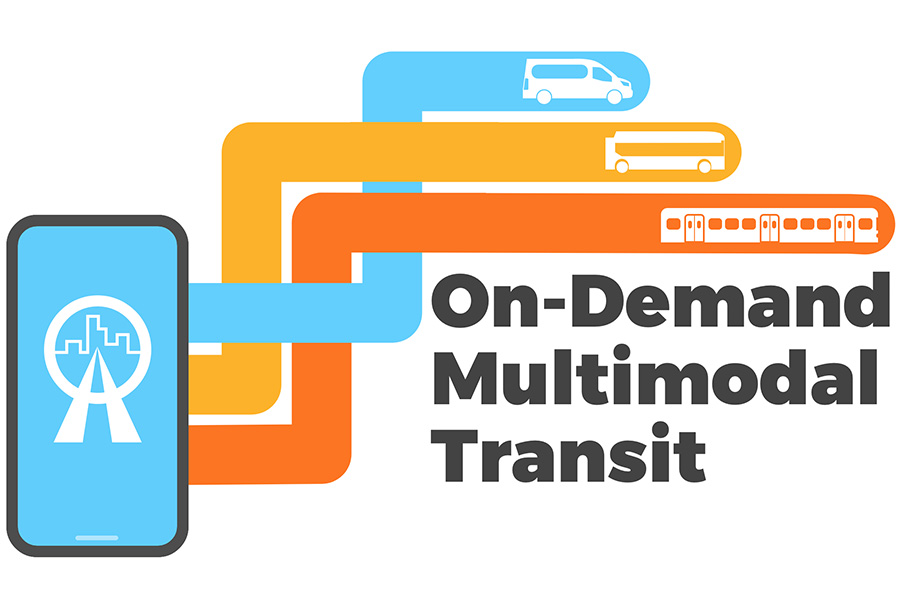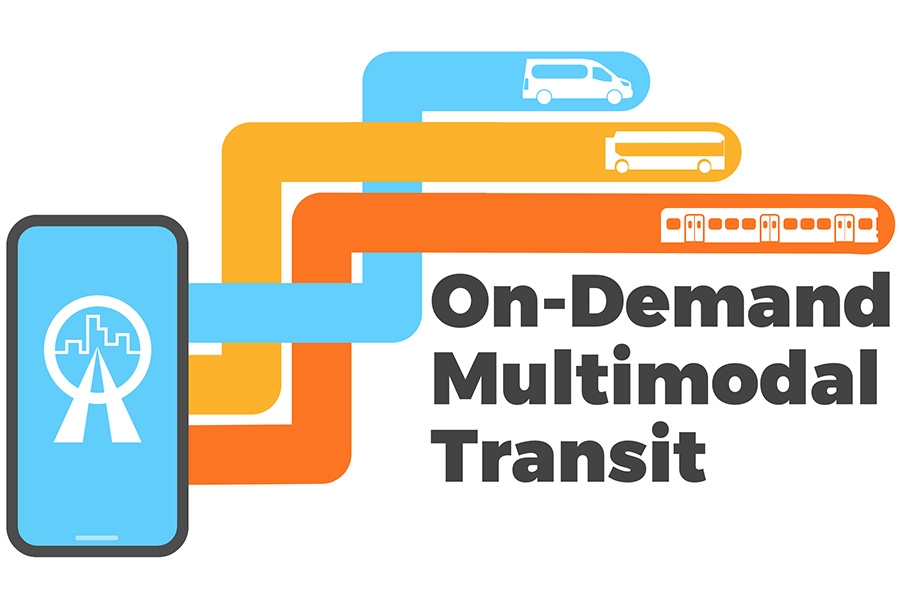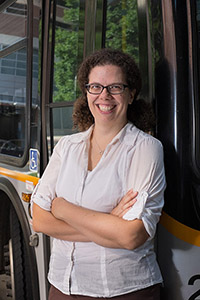 |
By Laurie Haigh
H. Milton Stewart School of Industrial and Systems Engineering
The National Science Foundation (NSF), in partnership with the Department of Energy, has awarded a $1 million Stage 2 Civic Innovation Challenge grant to a Georgia Tech research team to pilot an On-Demand Multimodal Transit System (ODMTS) in Atlanta. The goal of the project is to make public transportation in Atlanta faster, more convenient, and more equitable for the city’s residents, especially in underserved communities.
Mass transit has a significant first- and last-mile problem: Most people will only walk a quarter of a mile to and from public transportation. If the distance exceeds this threshold, ridership decreases by more than 90%. To address this, the research team has created an ODMTS, which uses small on-demand vehicles, in addition to buses and light rail, to take riders to and from their destinations. The on-demand vehicles act as feeders to and from the fixed routes, allowing the transit system to be essentially door-to-door.
The research team is led by Industrial and Systems Engineering Professor Pascal Van Hentenryck, who began to tackle the first- and last-mile problems in mobility eight years ago in Canberra, Australia. He then conducted another successful case study in Ann Arbor, Michigan. In both midsized cities, the multi-modal approach resulted in a significant reduction in both cost and passenger wait times. In 2018, Van Hentenryck joined the Georgia Tech faculty, shifted his focus to Atlanta, and began a collaboration with the Metropolitan Atlanta Rapid Transit Authority (MARTA). This winter, after more than three years of preparation, the team plans to pilot ODMTS in Atlanta areas with limited public transportation.
The interdisciplinary research team includes Kari Watkins, the Frederick Law Olmsted Associate Professor in the School of Civil and Environmental Engineering; Professor Subhrajit “Subhro” Guhathakurta in the School of City and Regional Planning; Executive Director for Partnership and Inclusive Innovation Debra Lam and Associate Professor Christopher Le Dantec in the School of Interactive Computing.
“In academia, we often conduct research on subjects theoretically, but it is rare to have the opportunity to actually implement a service in the real-world and evaluate the impacts,” Watkins said. “It gives MARTA an opportunity to try this type of on-demand service and have a full evaluation conducted by the Georgia Tech team. We can see what types of riders we attract and how to expand MARTA’s reach while better serving new and existing riders.”
|
|
While ODMTS will improve the performance and efficiency of public transportation for everyone in Atlanta, the main objective is to provide cost-effective transportation to underserved communities and connect residents in underserved communities to jobs, healthcare, education, and healthy food. The ODMTS pilot will run in MARTA’s four jurisdictions: Clayton, DeKalb, and Fulton counties, and the City of Atlanta.
“It is almost impossible to do this with a traditional system, because these areas are very large and sparsely populated,” said Van Hentenryck. “It is not feasible to put buses in these areas, because they would run empty most of the time, and they require significant capital expenditures. On-demand vehicles, however, are inexpensive to operate and can reach a larger population, because they can be deployed as needed rather than following a set route.”
Though this is not the team’s first pilot, tackling a city like Atlanta is no small feat. Most of the algorithms used in Canberra and Ann Arbor had to be completely rewritten to account for Atlanta’s size and rail system, a component not part of the previous pilots. This creates a four-level system — trains, buses, on-demand vehicles, and walking — to get passengers to and from their locations.
Tickets will cost the same as the traditional MARTA system, just $2.50 each way, and riders will be able to purchase fare using the Breeze system. The team is also using a combination of machine learning and optimization techniques to predict rider behavior and ensure the system can scale accordingly.
“If we decrease transit time by 40%, more people will adopt transit because now it is much faster and more convenient than it used to be,” explained Van Hentenryck. “This will increase the demand, so it is important that we size the system correctly to account for this.”
Watkins says she and her team will focus on studying the usage of the ODTMS and its impacts by measuring ridership, wait times, travel times, accessibility and satisfaction.
“We’re very interested in new riders – folks who didn’t previously use MARTA and the socio-demographics of those new riders,” Watkins said. “The idea is to assess this particular corridor as well as if we expanded it to other parts of MARTA’s service area.”
The ODTMS research is linked to another research consortium that Watkins and Van Hentenryck are involved in at Georgia Tech. In 2020, the Department of Transportation provided funding for a Tier-1 University Transportation Center (UTC) at Georgia Tech to study and address declining transit ridership.
The UTC, named T-SCORE: Transit - Serving Communities Optimally, Responsively, and Efficiently, represents a consortium of researchers from Georgia Tech and three other universities. In addition to research, the T-SCORE center is focused on guiding public transportation into a sustainable and resilient future through solutions—including on demand transit services like the ODMTS model.
Collaboration Leads to Success
“We are grateful to the National Science Foundation for this grant and proud to partner with Georgia Tech,” said MARTA Deputy General Manager Collie Greenwood. “Exploring first- and last-mile connectivity options is important in providing transit service that meets the needs of everyone in metro Atlanta.”
The research team will partner directly with residents in pilot communities, as well as with the transportation advocacy organization Atlanta Bicycle Coalition, to ensure transit services and access address the real-world needs of underserved locations.
The Stage 2 Civic Innovation Challenge grant is the latest in a series of awards to bring ODMTS to Atlanta. The team received the NSF Leap HI (Leading Engineering for America’s Prosperity, Health, and Infrastructure) grant in 2019 in collaboration with the School of Civil Engineering, School of Urban Planning, MARTA, the Atlanta Regional Commission, and the City of Atlanta to scale the algorithms used in Canberra and Ann Arbor with hopes to eventually pilot the program in Atlanta. They were then awarded a Stage 1 Civic Innovation Challenge planning grant in January 2021 to model the mobility patterns in Atlanta in preparation for a pilot in Stage 2.
Of the 52 teams selected for Stage 1, only 17 were chosen to move forward with pilot projects in Stage 2. They will have 12 months to complete and evaluate their projects.
Van Hentenryck is eager to implement the pilot. “For me, this is the most successful research that you can have,” he said. “We started more than three years ago with an idea and now we get to make a difference in the lives of people.”


